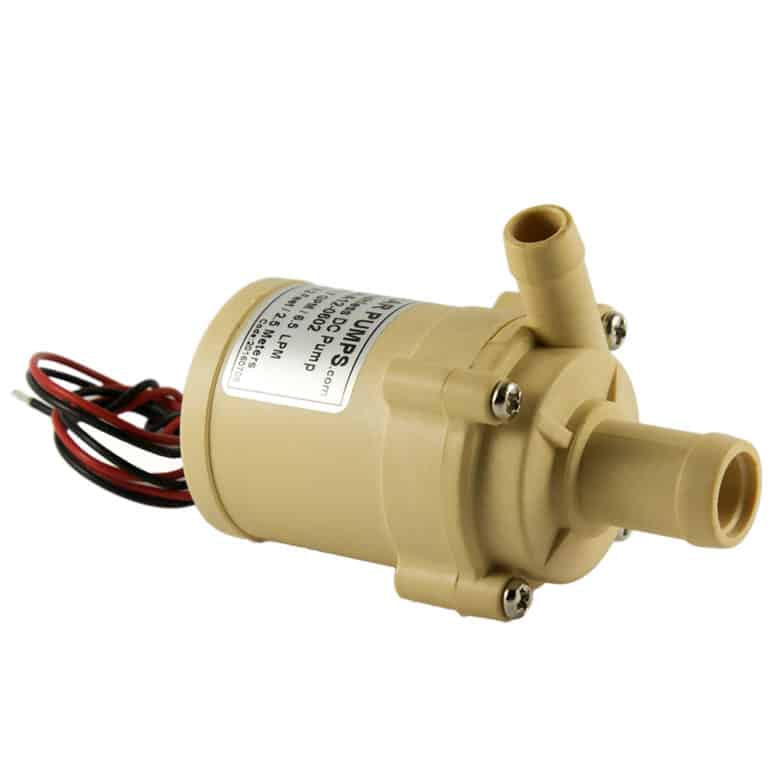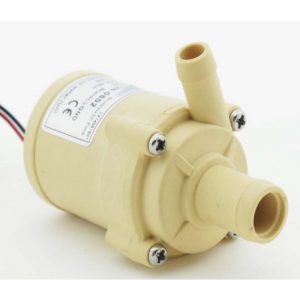Do I have to submerge a submersible pump?
No. Submersible pumps operate in or out of water. Their waterproof housing allows them to be submersed without causing damage.
Important: Please note that DC water pumps marked as H (for high temperature rating) cannot be submersed in high temperature liquid. You must either use the pump as an external high temperature pump or a submersed low temperature pump.
If you have any questions or doubts about whether or not you need to submerge a submersible pump, feel free to contact us. We’d be happy to help you find the answers you want.
Head Value
How does the head value relate to my pump system?
Head is the height at which water pumps can raise liquid.
Bear in mind that most of our customers are dealing with an enclosed solar hot water system. The enclosed water systems have hot water solar panels on the roof. In an enclosed system, which is completely void of air, head becomes almost a moot point. Hence, as the saying goes, what goes up must come down.
Water in a solar hot water heating system that is coming down off the roof creates a syphoning effect on the water going up to the roof, thus effectively offsetting the head pressure. In such cases, the flow rate is normally the primary concern.
Air Locks
Why does an air lock occur in my system?
A blockage of the flow in a pump or pipe, caused by an air bubble. An air lock is a restriction of or a complete stoppage of liquid flow. This is caused by air trapped in a high point of a liquid-filled pipe system. Air, being less dense than the liquid, rises to any high points. When pressure is applied, instead of the liquid flowing as it normally would an air lock occurs. Simply put an air bubble reduces the flow in direct proportion to the size of the air bubble. Example: a 1/4” bubble in a 1/2” line reduces the flow by 1/2.
It is common that problems with a system are due to a trapped air bubble. To fix this problem be sure to carefully purge the air from the system. See our troubleshooting video on YouTube.
Follow us on Facebook, Twitter, Instagram, Pinterest, and YouTube for updates and posts.
Also, read about our replacement pumps for RVs, our thermo-syphoning CWX Ball Valve, and heat pumps for electric vehicles.


